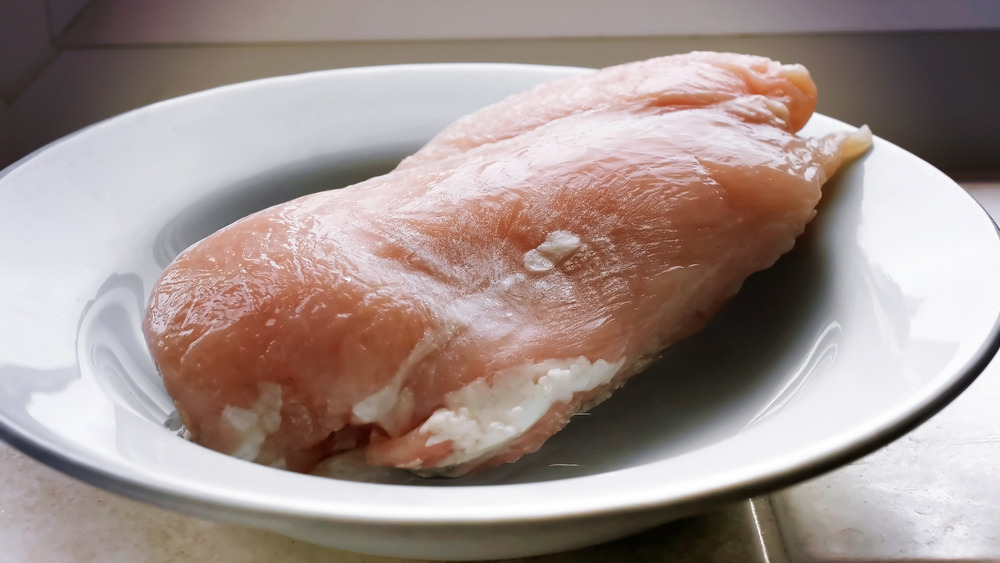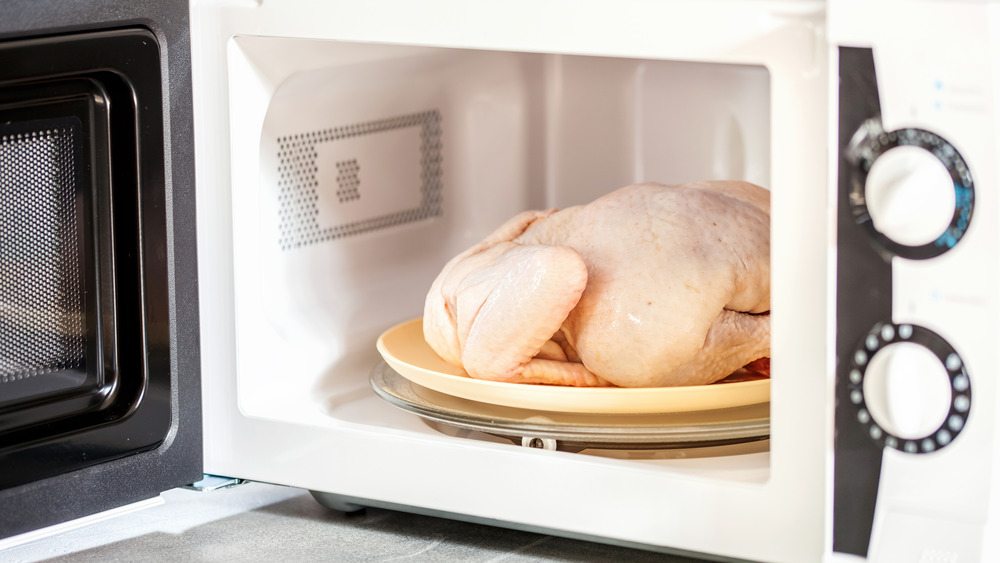You Should Never Thaw Chicken On The Counter. Here's Why
If you're not cooking it within a day or two of your grocery run, freezing chicken is a good way to stock up and preserve it for later. The downside is you'll have to give it time to thaw before you start cooking, and, depending on how you do it, you could potentially be risking foodborne illnesses. Though it might seem like an easy way to thaw chicken, letting it sit out on your kitchen counter could be dangerous.
According to the U.S. Department of Agriculture's Food Safety and Inspection Service, raw poultry has to be kept at a safe temperature, including when it's thawing. As soon as your chicken (and other raw meats and eggs) reach 40 degrees F or more, any bacteria that were present before it was frozen can start multiplying. According to the USDA, you should never thaw food on the counter, nor should you thaw it by running it under hot water. Even if the center is still frozen, bacteria can multiply if even a part of the meat reaches 40 degrees F or warmer. Luckily, there are multiple ways to thaw chicken that won't put you at risk.
How to safely thaw frozen chicken
Thawing chicken in the refrigerator is the safest and most reliable way — even better, it doesn't require any attention from you. For ground chicken and smaller cuts of poultry, you can move them to the fridge about a day before you plan on cooking them. Larger cuts will take longer; a whole chicken, for example, will probably need at least two days in the fridge to thaw completely.
Another method you can use if you're in a rush is the microwave. Healthline reports that this is the fastest way to thaw chicken, but you have to cook it right away. The microwave will defrost the chicken fast, but it'll also heat it to 40 degrees F or higher, which is the danger zone for bacterial growth. If you cook it right away, however, the heat will kill any bacteria.
Finally, cold water is another trick you can use for quick thawing. According to the USDA, you can seal your chicken in a waterproof bag, then submerge it in cold water, changing out the water every 30 minutes. Small cuts can thaw in about an hour, while larger pieces of poultry might take up to three hours. You'll have to pay more attention to your chicken this way, because you'll have to keep changing the water, but it's faster than using the fridge. However you decide to thaw your chicken, just make sure you're following food safety guidelines.

